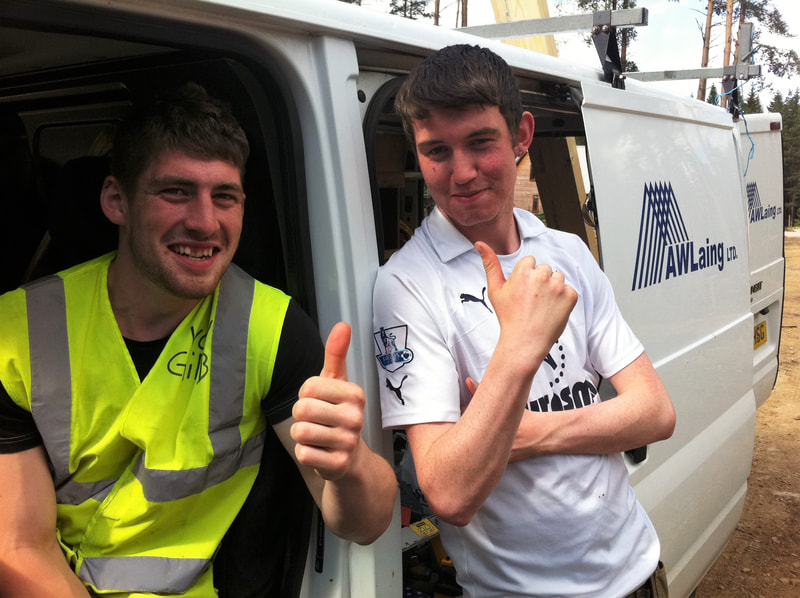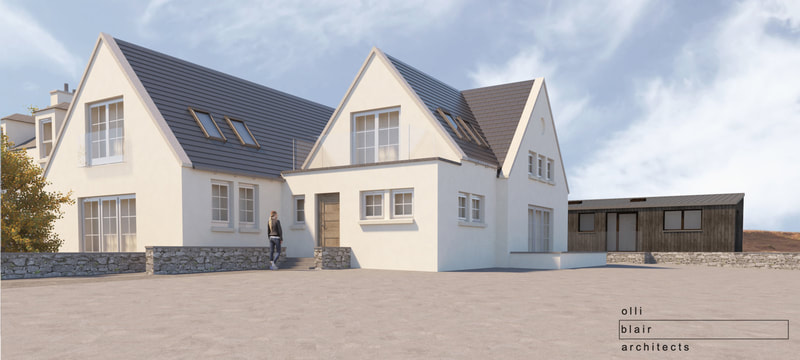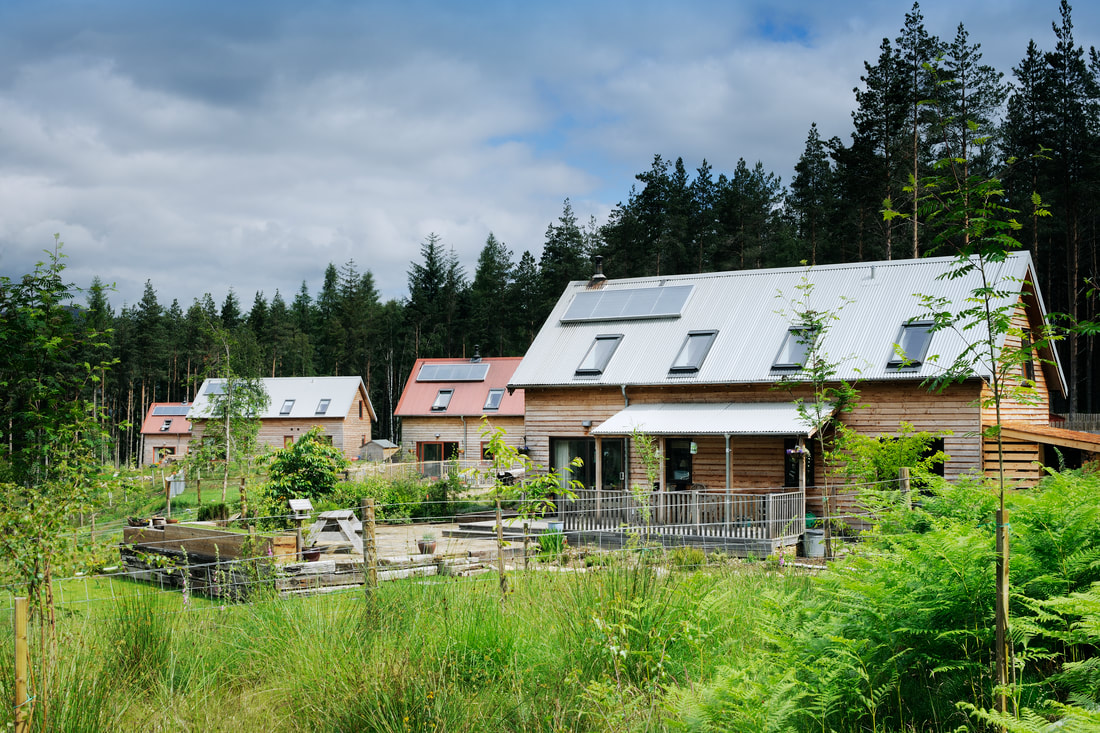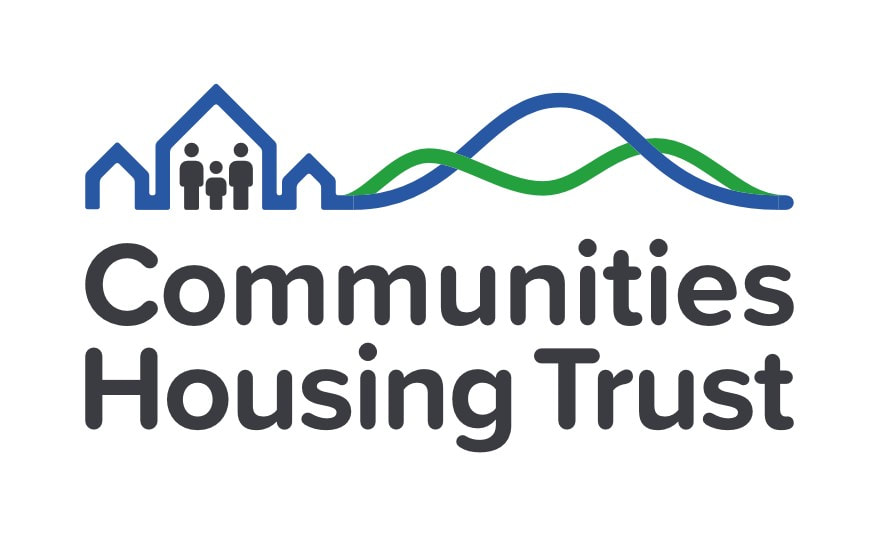|
This blog is part of a monthly series about community-led housing in Scotland, jointly written by Mike Staples, Chief Executive at South of Scotland Community Housing (SOSCH), and Ronnie MacRae, Chief Executive at Communities Housing Trust (CHT). Between us we’ve worked with hundreds of communities across Scotland, facilitating well over 1,000 affordable homes. In 2012, seven apprentices were taken on to help build six affordable homes in the Cairngorms National Park, as part of a skills training programme to boost crucial rural trades. Ten years later, three are still with the same local contractor, AW Laing. The rest have been taken on by other contractors in the area. The ten homes at Ardgeal near Kincraig were an exemplar community-led development by the Communities Housing Trust, using a former Forestry & Land Scotland site where all timber felled and material excavated was used on site. The homes have minimal impact on the environment and are efficient to run. But beyond this, they provided needed job opportunities for young people and boost rural construction trades. The apprentice programme was one of many ways the project looked at long-term sustainability. All felled timber was milled on site and some was provided for an outdoor classroom at the local primary school, whose numbers were increased with new families moving to the ten homes. In the remote community of Glentrool, on the edge of the Galloway Forest Park, Glentrool & Bargrennan Community Trust appointed Broatch Construction to redevelop three homes into affordable, family housing. The work was completed in March 2022, helped along by a team which included four apprentices. A trainee electrician, a plumber, and two joiners worked on the redevelopment project, all recruited from the local surrounding area. The apprentices used advanced, climate- friendly approaches, including implement new solar-powered heating systems, to create beautiful and high-quality homes for incoming families. The project also allowed for practical ‘green-build’ experience for young professionals along the way. South of Scotland Community Housing is also partnering with South of Scotland Enterprise and community organisations, including Dumfriesshire East Community Benefit Group, to develop a programme of skills- building for low-energy retrofits. These schemes will be jointly delivered with funders and communities to support an inclusive transition to net-zero in the construction and housing sectors. ‘Just’ building a house can be so much more – and we need to provide thousands more affordable homes in Scotland. The associated benefits from a community-led approach are significant. Establishing skills development programmes to help deliver community-led housing is an effective way to:
Opportunities for rural and regional growth Rural trades are in crisis. Construction prices rose more than 27% from May 2021 to May 2022;[1] travel costs are through the roof; and labour is exceedingly hard to come by, especially in rural areas. Numbers of construction employees in Scotland fell by 9.2% in 2020 compared to 2019, whereas numbers increased in England and Wales.[2] Construction projects overall are costing 10-15% more compared to 1-2 years ago.[3] These create real knock-on impacts when a community is paying. Since many construction firms and tradespeople are concentrated in the central belt, there is a growing need for regional skills. With the push towards community-wealth building, there is a huge opportunity for regional supply chains as an investment priority for the development sector. By keeping contracts local, community housing projects have the potential to create new jobs and training opportunities. It also ensures wages stay local and are reinvested in nearby people, businesses and services. This includes ongoing and long-term opportunities for repairs and maintenance, to establish or grow local companies which are more accessible and less expensive than companies who have to travel long-distance. This is a key aspect of viability and affordability of homes in rural areas. Community-led housing simultaneously provides job opportunities in rural areas and tackles the skills shortage for the long-term, further supporting rural communities down the line. Secure jobs and housing mutually reinforce each other and are important parts of creating great places. No Planet B As for planetary considerations, there’s also the drive to repurpose empty buildings across Scotland. In Glendale, Skye, the renovation of the disused school will provide opportunities for students to do hands-on coursework units in retrofitting and recycling building materials, as well as CPD for those in related fields. This Glendale Trust and Communities Housing Trust project is working in partnership with Historic Environment Scotland, Zero Waste Scotland, Built Environment Smarter Transformation, and Climavore, to name just a few. We can’t have ‘sustainable developments’ with exciting new ‘green’ materials that have to be shipped internationally and installed by experts from afar. So, looking holistically at climate conscious aspects common to community-led projects, local contractors and companies help do the following:
References
[1] See UK Government’s Department for Business, Energy & Industrial Strategy monthly statistics: https://www.gov.uk/government/statistics/building-materials-and-components-statistics-june-2022 [2] ONS Construction Statistics GB 2020 https://www.ons.gov.uk/businessindustryandtrade/constructionindustry/articles/constructionstatistics/latest [3] Communities Housing Trust projects at September 2022; own calculations. This is the first in a series of monthly blogs about community-led housing in Scotland, jointly written by Mike Staples, Chief Executive at South of Scotland Community Housing (SOSCH), and Ronnie MacRae, Chief Executive at Communities Housing Trust (CHT). Between us we’ve worked with hundreds of communities across Scotland, providing well over 1,000 affordable homes. Amid all the noise about Glasgow’s COP26 and the world’s net zero targets, progressive and creative climate action has been quietly taking place in communities across Scotland. Scotland has ambitious climate goals. We’ve committed to becoming carbon neutral by 2045 and having 1 million zero-emission homes by 2030. The built environment has widely been acknowledged as a key area for opportunity in meeting these goals, and communities are making great progress through community-led housing. This isn’t new. Community Land Scotland’s recently commissioned research, Community Landowners and the Climate Emergency, finds that communities are good at climate-friendly regeneration and that environmental sustainability is a key tenet within their activities. The report finds that communities have “an over-riding concern to care for the community and the local environment,” (p.7). A second report by the Community Land Trust Network of England and Wales finds that community-led housing organisations in the UK routinely meet and exceed local and national carbon reduction requirements. Why? Because communities focus on their experiences, their needs, and their aspirations for the future. They look long-term. They want to thrive. They prioritise wellbeing. And this all translates into genuine, grassroots commitment to sustainability and environmental protections that we find in so much of their activities. Both SOSCH and CHT know this to be true. We frequently work with communities who are generating their own power through, for example, hydro schemes, rather than relying on fossil fuels. We work with communities retrofitting abandoned buildings and bringing them back into productive use as low-energy homes. We work with communities using vacant and derelict land to develop diverse and creative combinations of housing, services, and social and green spaces. Providing homes and services within easy reach contributes to the national aim of 20-minute neighbourhoods and reduces travel. These are just a few aspects of a wide picture of how we’re supporting communities in working towards net zero, and indeed carbon negative. Green design and energy efficiency
A mix of facilities supporting a local circular economyThe GALE Centre, part of CHT’s regeneration of Achtercairn in the centre of Gairloch on the west coast, is run by the Gairloch & Loch Ewe Action Forum (GALE). It embodies GALE’s ambitions to provide services and lead sustainable, community-led development in the region.
Retrofitting disused buildings
Supporting rural trades and ‘green’ construction
So, the good news is that community-led housing is regenerating places and making important contributions to tackling our climate crisis.
Community-led housing enables a just and inclusive transition to net-zero. It is an empowering, democratic way to involve everyone in reducing climate change without jeopardising the human right to a warm, affordable home. Let’s widen the national conversation about net zero and the ways to achieve it. Community-led development, based on the everyday experiences of local people and their wishes for the future, is a fair and responsible way to deliver sustainable development that Scotland urgently demands. Support for community ownership and development means both people and planet thrive long-term. We’re calling on the Scottish and UK governments to recognise the leadership of communities and increase support for community-led housing. It’ll allow more communities to deliver on climate targets as well as building the homes we so desperately need. |
CHT BlogThis blog features a variety of CHT’s developments and projects located throughout the central and northern Scotland. It also includes the latest news and updates regarding the Trust. Archives
September 2023
Archives
September 2023
Categories
All
|













 RSS Feed
RSS Feed
